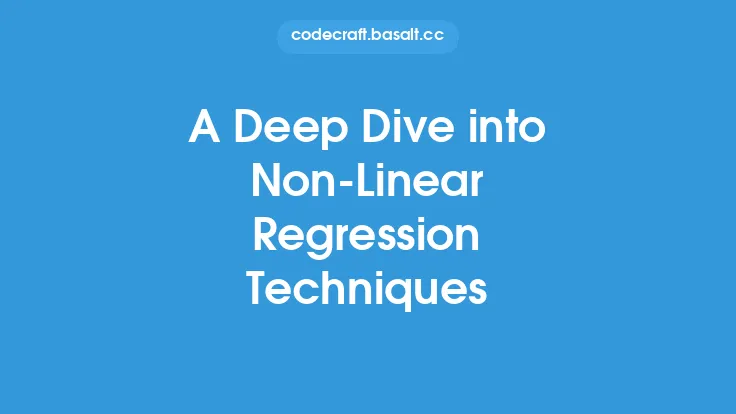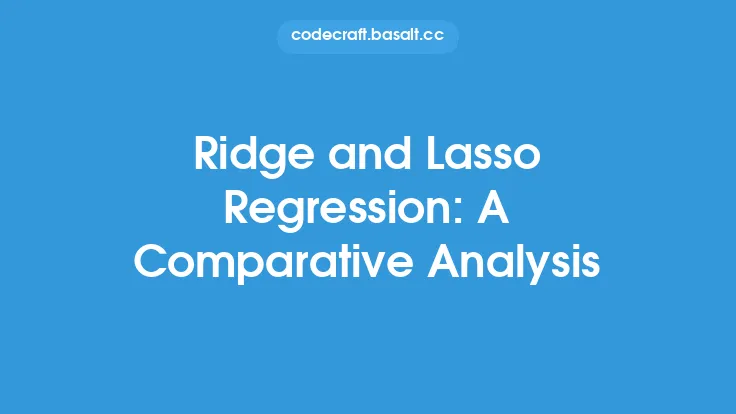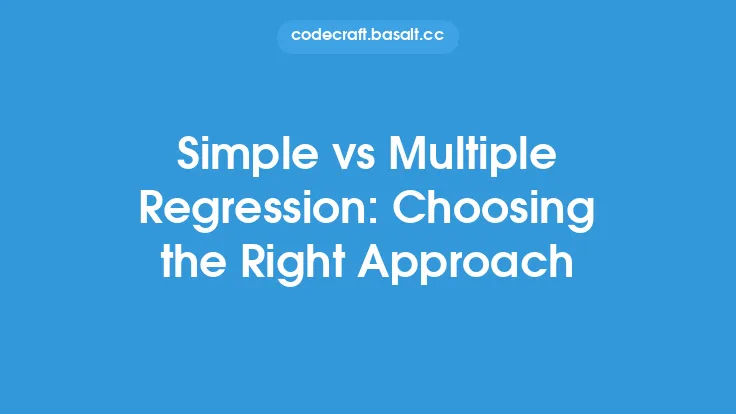Linear regression is a fundamental concept in machine learning and statistics that involves the analysis of the relationship between a dependent variable and one or more independent variables. It is a widely used technique for predicting the value of a continuous outcome variable based on one or more predictor variables. The goal of linear regression is to create a linear equation that best predicts the value of the outcome variable based on the values of the predictor variables.
What is Linear Regression?
Linear regression is a type of regression analysis where the relationship between the dependent variable and independent variables is modeled using a linear equation. The linear equation is of the form Y = β0 + β1X + ε, where Y is the dependent variable, X is the independent variable, β0 is the intercept or constant term, β1 is the slope coefficient, and ε is the error term. The slope coefficient β1 represents the change in the dependent variable for a one-unit change in the independent variable, while the intercept β0 represents the value of the dependent variable when the independent variable is equal to zero.
Assumptions of Linear Regression
For linear regression to be applicable, certain assumptions must be met. These assumptions include:
- Linearity: The relationship between the dependent variable and independent variables should be linear.
- Independence: Each observation should be independent of the others.
- Homoscedasticity: The variance of the error term should be constant across all levels of the independent variable.
- Normality: The error term should be normally distributed.
- No multicollinearity: The independent variables should not be highly correlated with each other.
If these assumptions are not met, the results of the linear regression analysis may not be reliable, and alternative techniques such as non-linear regression or generalized linear models may be necessary.
Types of Linear Regression
There are several types of linear regression, including:
- Simple linear regression: This involves a single independent variable and a single dependent variable.
- Multiple linear regression: This involves multiple independent variables and a single dependent variable.
- Multivariate linear regression: This involves multiple independent variables and multiple dependent variables.
Each type of linear regression has its own set of applications and requirements, and the choice of which type to use depends on the research question and the nature of the data.
Estimation of Linear Regression Parameters
The parameters of the linear regression equation, including the slope coefficient and intercept, are typically estimated using ordinary least squares (OLS) regression. OLS regression involves minimizing the sum of the squared errors between the observed values of the dependent variable and the predicted values based on the linear equation. The estimated parameters are then used to make predictions about the value of the dependent variable for new, unseen data.
Evaluation of Linear Regression Models
The performance of a linear regression model can be evaluated using a variety of metrics, including:
- Coefficient of determination (R-squared): This measures the proportion of the variance in the dependent variable that is explained by the independent variable(s).
- Mean squared error (MSE): This measures the average squared difference between the observed and predicted values of the dependent variable.
- Mean absolute error (MAE): This measures the average absolute difference between the observed and predicted values of the dependent variable.
- Root mean squared percentage error (RMSPE): This measures the square root of the average squared percentage difference between the observed and predicted values of the dependent variable.
These metrics provide a way to assess the accuracy and reliability of the linear regression model, and to compare the performance of different models.
Applications of Linear Regression
Linear regression has a wide range of applications in fields such as:
- Business: Linear regression can be used to predict sales, revenue, and customer behavior based on factors such as marketing campaigns, pricing, and seasonality.
- Economics: Linear regression can be used to model the relationship between economic variables such as GDP, inflation, and unemployment.
- Medicine: Linear regression can be used to model the relationship between disease outcomes and factors such as treatment, dosage, and patient characteristics.
- Social sciences: Linear regression can be used to model the relationship between social outcomes and factors such as education, income, and demographics.
In each of these fields, linear regression provides a powerful tool for analyzing and understanding the relationships between variables, and for making predictions about future outcomes.
Common Challenges in Linear Regression
Despite its many advantages, linear regression can be challenging to apply in practice. Some common challenges include:
- Dealing with missing data: Linear regression requires complete data, and missing values can lead to biased or inaccurate results.
- Handling non-linear relationships: Linear regression assumes a linear relationship between the dependent variable and independent variables, but in practice, the relationship may be non-linear.
- Dealing with outliers: Outliers can affect the accuracy and reliability of the linear regression model, and may require special handling or removal.
- Selecting the right variables: The choice of independent variables can have a significant impact on the results of the linear regression analysis, and requires careful consideration and validation.
Conclusion
Linear regression is a fundamental concept in machine learning and statistics that provides a powerful tool for analyzing and understanding the relationships between variables. By understanding the assumptions, types, and applications of linear regression, as well as the common challenges and limitations, practitioners can apply linear regression effectively in a wide range of fields and applications. Whether used for prediction, inference, or exploration, linear regression remains an essential technique in the data scientist's toolkit.





